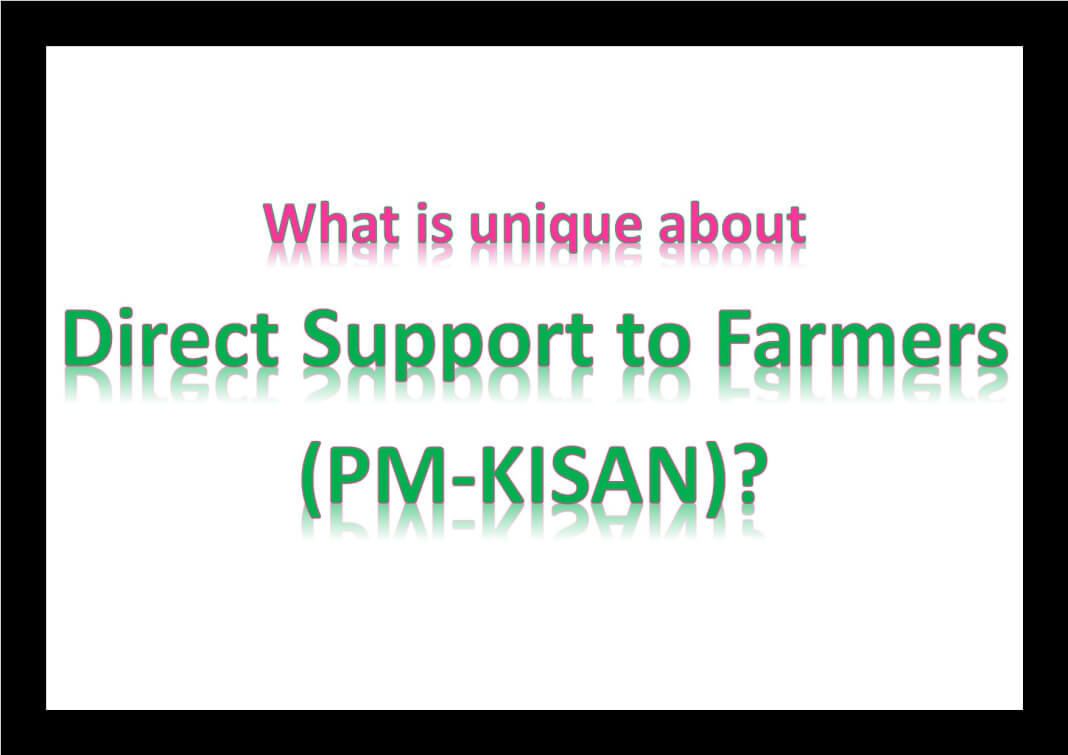
In agriculture, there are two major types of government support measures. The first one is price support measure and the second one income support measures.
Price support means the government is procuring the agricultural produce from farmers at a remunerative price. India’s Minimum Support Price based procurement is a classic example.
The MSP as a price support measure
But in the case of MSP, the farmers are supposed to be encouraged to produce more and the market price and production levels are influenced. Here, a high cost country can become a big producer by giving higher prices (read subsidies) to farmers. WTO calls these subsidies as amber box subsidies that distorts trade. Such subsidies should be reduced as they may make a high cost producer a big produce and the country may export its produce.
Our Food Subsidy (Rs 184220 crores as per 2019 budget) belongs to the amber box subsidies that the WTO requests us to reduce it.
Here, remember according to the WTO, a support (subsidy) by the government that influences production and price is trade distorting and it should be reduced.
What is Direct income support to farmers?
Now, coming to the second type of support ie., the income support; here, the government will be giving direct payment to the farmers for their low income from farming. Under the WTO terminology, it is called Direct payments to farmers or Decoupled Income Support. Decoupled means such an income transfer to farmers will not influence (or minimum influence) production and price of the respective croops.
According to WTO, direct support includes income guarantee and security programmes (natural disasters, state financial contributions to crop insurance, etc.); programmes aimed at adjusting structures and environmental protection programmes, regional development programmes.
Under Agreement on Agriculture (WTO), the direct payment to farmers comes under the Green Box. The Green Box subsidies can be given by a government or in other words they need not be reduced.
Farm income support – developing and developed countries – why development matters?
The political economy of farm support is that most of the developing countries are giving price support (like the MSP). This is because they don’t have the fiscal capacity (tax revenue) to provide money to large size of their farming people.
Hence, most traditional and developing economies cannot afford to provide price and income supports for agriculture.
Remember, in the US, farming community is just around 3% of their population whereas in India, it is around 46%. Giving subsidies to huge population is a fiscal challenge as well as a targeting (finding the deserving people) challenge.
So, direct income support to farmers is the type of support provided by developed country governments. Low number of farmers and easy way to find the deserving farmers make direct income support as the easiest and effective agricultural support in the developed countries.
Most developed countries are known for providing direct income support to the farmers. In the EU, decoupled income support is the primary support measure by the government. In the US also, there is direct payments to farmers.
PM-KISAN -India enters the Green-Box club
The PM-KISAN has changed everything. It is very clear as a direct income support scheme, the subsidy is like the ones given in advanced countries. Or in other word, with PM-KISAN, India entered the Green Box era in the WTO parlance.
Remarkably, India’s agricultural support strategy shows symptoms of migration from price support (MSP) to income support with the launch of PM-KISAN.
Benefits of Direct Income Support
Direct Income Supports’ ability to encourage farmers to raise production is less. At the same time, it has some positives:
- There is no leakage – income is transferred through DBT.
- There is protection for farmers against income loss and adverse terms of trade impact on agriculture.
- It is less distortionary and is WTO combatable; there is less influence on production and price.
- Farm income support is superior to price support as it is crop neutral. The farmer is getting reward for continuing with agriculture whatever may be the crop he is cultivating. On the other hand, India’s MSP historically, favoured wheat and rice farmers as procurement was concentrated on these two crops.
These are pictures that we can derive with the launch of PM-KISAN. But the fiscal cost is big and in the long run, the continuation of the scheme is doubtful.
*********









